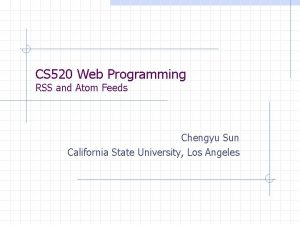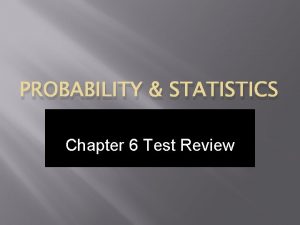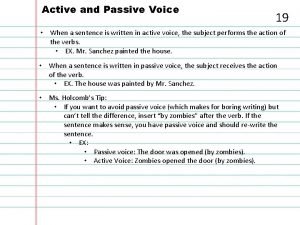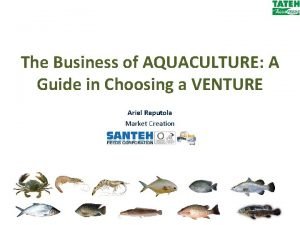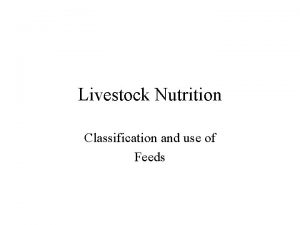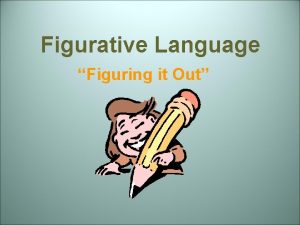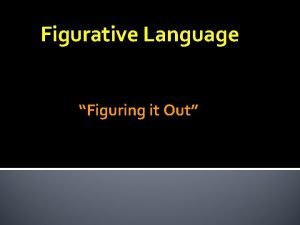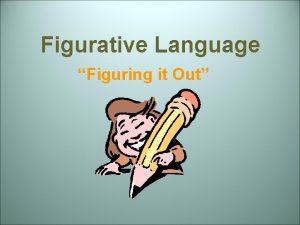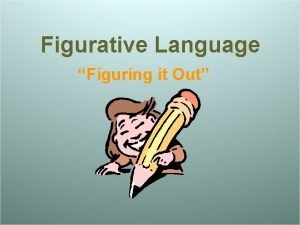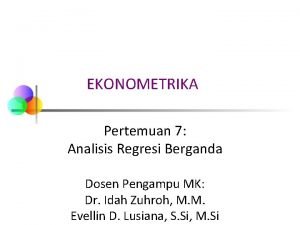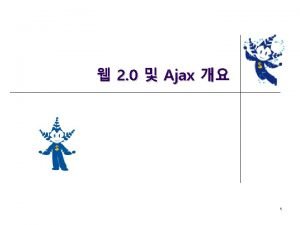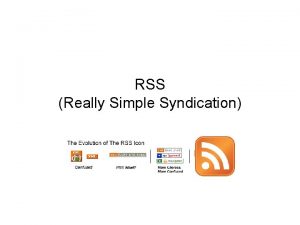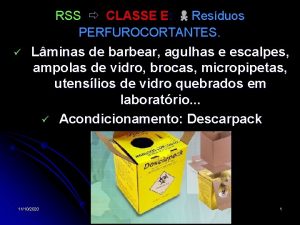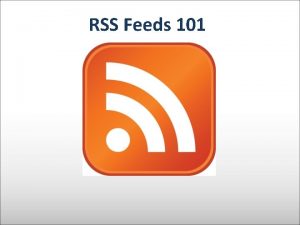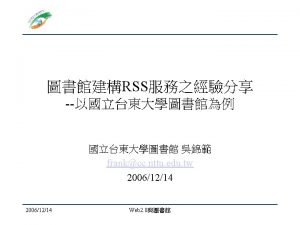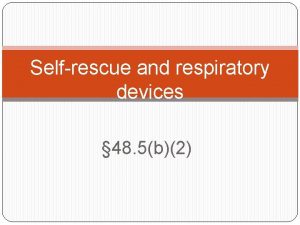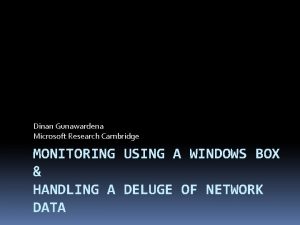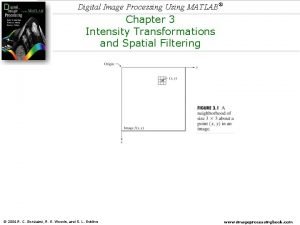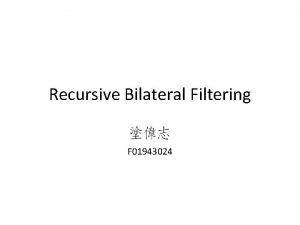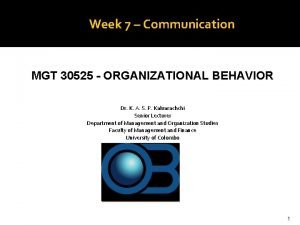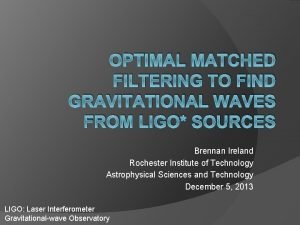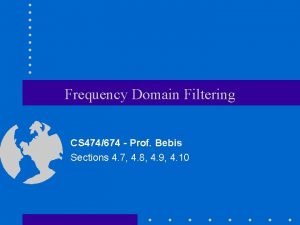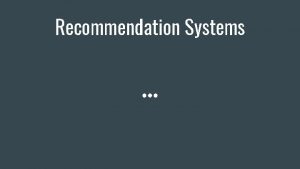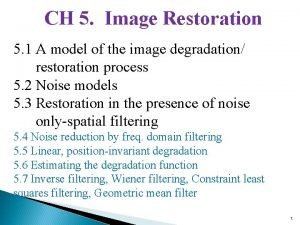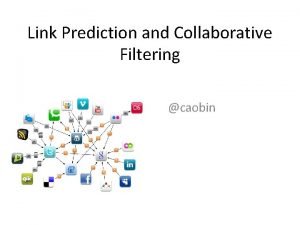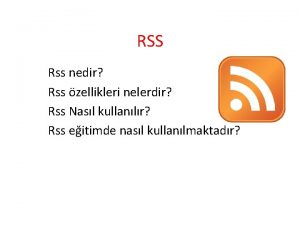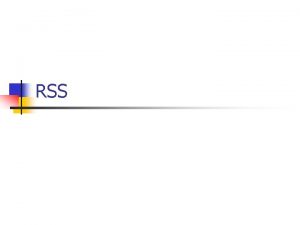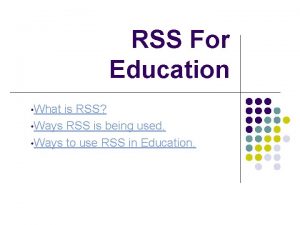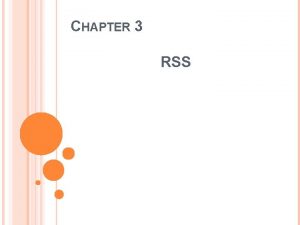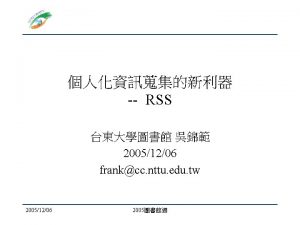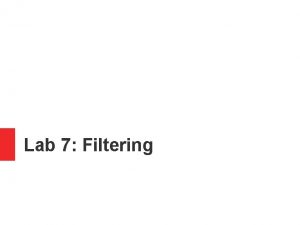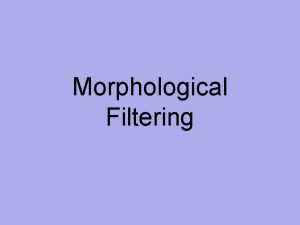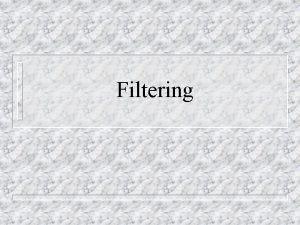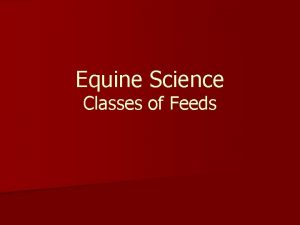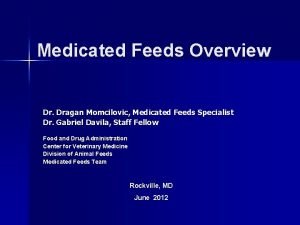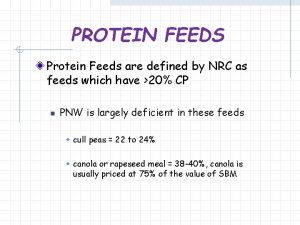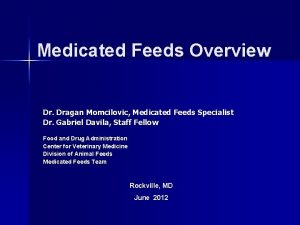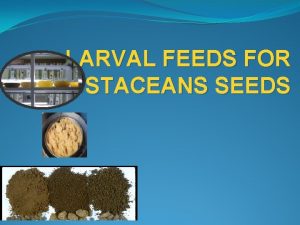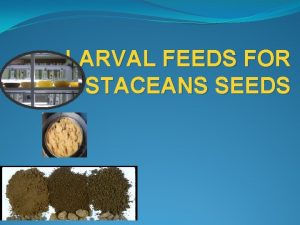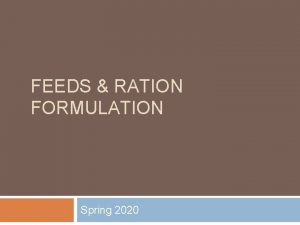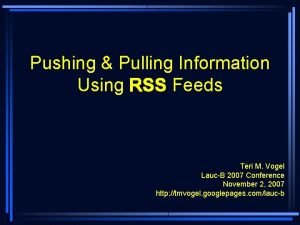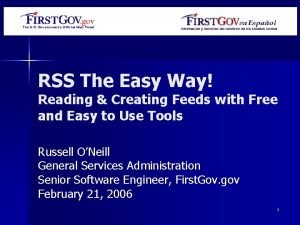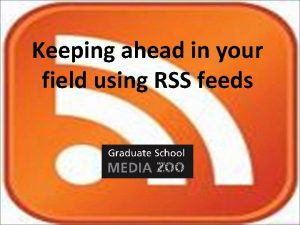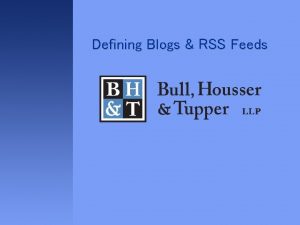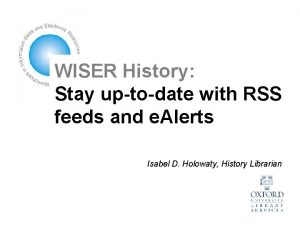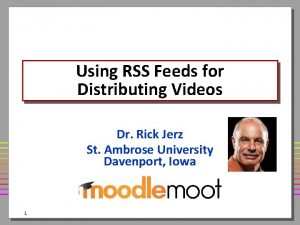INFSCI 2480 RSS Feeds Document Filtering Yiling Lin






















, Doc 2[ … money …](s), Doc 3[ … Weighted Probability Doc 1[… money …](s), Doc 2[ … money …](s), Doc 3[ …](https://slidetodoc.com/presentation_image_h2/b9bf2714a91662bb7640ec02078570c1/image-23.jpg)












- Slides: 35

INFSCI 2480 RSS Feeds Document Filtering Yi-ling Lin 02/02/2011

Feed? RSS? Atom? RSS = Rich Site Summary RSS = RDF (Resource Description Framework) Site Summary RSS = Really Simple Syndicate ATOM

Feeds Feed = “A document (often XML-based) which contain content items, often summaries of stories or weblog posts with web links to longer versions” Feed > RSS, Atom Feeds RSS 2. 0 RSS 1. 0 RSS 0. 92 RSS 0. 91 Atom

RSS Versions Version distribution collected by an RSS search engine (Feb 2010) 2. 0 > 1. 0 > 0. 91 > 0. 92 http: //www. syndic 8. com/st ats. php? Section=rss#tabta ble

Comparison of RSS versions RSS 0. 91 X RSS 0. 92 O RSS 2. 0 O X X O O Elements on items: authors, comments, pub. Date X X O Item count limitation 15 X Allows both channel and item metadata X Categories on channel or item Elements on the channel : language, copyright, docs, last. Build. Date, managing. Editor, pub. Date, rating, skip. Days, skip. Hours, generator, ttl Item enclosures Notes Channel-level metadata only Modularized

Revealing RSS in Web pages

RSS content Structure RSS 0. 90 to 2. 0 family XML <channel> & <item> parts Feed information (channel) Each article content (item) Additional features with higher versions — 0. 90 to 2. 0 RSS 1. 0 & Atom are in different formats!

RSS 0. 92

RSS 2. 0

RSS 1. 0 “uses RDF” http: //www. w 3. org/R DF/

ATOM

In more detail. . . Specifications RSS 0. 91: http: //www. rssboard. org/rss-0 -9 -1 -netscape RSS 2. 0: http: //cyber. law. harvard. edu/rss. html

Parsing RSS Feeds Problem — extract texts from RSS structure They are XML Parsers SAX DOM Out-of-box parser

SAX and DOM SAX (Simple API for XML) — serial access parser Stream of XML data goes in Event-driven parsing DOM (Document Object Model) Use hierarchical structure for parsing

SAX Example

DOM Example

Ready-made Parser Universal Feed Parser <http: //www. feedparser. org>

Universal Feedparser

Core Attributes Follows RSS/ATOM syntax normalization However, not always updated /atom 10: feed/atom 10: updated /atom 03: feed/atom 03: modified /rss/channel/pub. Date /rss/channel/dc: date /rdf: RDF/rdf: channel/dcterms: modified

Advanced features Date parsing HTML sanitization Content normalization Namespace handling and more. . .

Document classification

Probability Calculation Pr(word|classification) Ex. Pr(“drug”|spam) = 80 docs / total 100 spam docs = 0. 8
, Doc 2[ … money …](s), Doc 3[ …](https://slidetodoc.com/presentation_image_h2/b9bf2714a91662bb7640ec02078570c1/image-23.jpg)
Weighted Probability Doc 1[… money …](s), Doc 2[ … money …](s), Doc 3[ … money …](s), Doc 4[……](s), Doc 5[……](ns) Pr(“money”|spam) = 3/4 = 0. 75 Pr(“money”|no-spam) = 0/1 = 0 Pr = 0. 5 (we don’t know) may be better than Pr = 0 (never) Ex. After finding one spam instance

Naive Bayesian Classifier Goal = Pr(Category|Document) Ex. Pr(Spam|Doc 1) = 0. 001, Pr(Nospam|Doc 1) = 0. 5 → Doc 1 = No-pam What we have is? = Pr(Feature|Category) Process = Pr(Feature|Category) → Pr(Document|Category) → Pr(Category|Document)

Pr(Document|Category) = Pr(Feature 1|Cat) * Pr(Feature 2|Cat) * Pr(Feature 3|Cat) … Pr(Feature. N|Cat) Pr(A ^ B) = Pr(A) * Pr(B) Assumption — A and B are independent from each other Not true — social vs. Web, social vs. Probability But still useful

Pr(Category|Document) Pr(A|B) = Pr(B|A) * Pr(A) / Pr(B) Thomas Bayes Pr(Category|Document) = Pr(Document|Category) * Pr(Category) / Pr(Document) Pr(Category) = # of docs in Cat / total # of docs Pr(Document) = Constant

Choosing a Category Take one with the highest probability What if, Pr(Spam|Doc) = 0. 000001, Pr(Nospam|Doc) = 0. 0000005 Answer may be “Not sure”

Choosing a Category Thresholding If Pr(Spam|Doc) > 3 * Pr(No-spam|Doc), Then spam → which is more reasonable

Persisting Trained Classifier in python, Dictionaries in memory — fc, cc Disappears after quitting from Python interpreter Should be saved to disc My. SQL — client/server RDBMS SQLite — file-based RDBMS

Persisting Trained Classifier Python shelve Put/Get any Python object into disk files

Alternative Methods Supervised learning methods Neural network Support Vector Machine Decision Tree Software packages Weka, R, SPSS Clementine, etc

Weka Example Data Weather condition → To play or not to play? 4 attributes, 1 class variable

Weka Example

Weka Example

Weka Example
 Programming rss feeds
Programming rss feeds Ingress filtering vs egress filtering
Ingress filtering vs egress filtering In a survey of 2480 golfers 15
In a survey of 2480 golfers 15 자바스크립트 쿠키
자바스크립트 쿠키 Tmg feeds
Tmg feeds The fire was extinguished active or passive
The fire was extinguished active or passive Mimaropa region
Mimaropa region Classification of animal feed
Classification of animal feed Old news figurative language
Old news figurative language A flag wags like a fishhook there in the sky
A flag wags like a fishhook there in the sky Consonance vs assonance
Consonance vs assonance A flag wags like a fishhook there in the sky
A flag wags like a fishhook there in the sky Facebook as rss feed moodle
Facebook as rss feed moodle Rss hierarchy
Rss hierarchy Unika soegijapranata
Unika soegijapranata Rss w
Rss w Really simple syndication initial release
Really simple syndication initial release Escala de rss
Escala de rss Yahoo weather rss feed
Yahoo weather rss feed What is rss
What is rss Mandy gio twitter
Mandy gio twitter Rss feed 產生器
Rss feed 產生器 Polycom rss 2000
Polycom rss 2000 Filtering self-rescue respirator
Filtering self-rescue respirator Screened subnet firewall
Screened subnet firewall Windows filtering platform
Windows filtering platform Image processing matlab
Image processing matlab Risk ranking and filtering
Risk ranking and filtering Band pass filtering in biomedical instrumentation
Band pass filtering in biomedical instrumentation Recursive bilateral filtering
Recursive bilateral filtering Filtering organizational behavior
Filtering organizational behavior Matched filtering gravitational waves
Matched filtering gravitational waves Frequency filtering
Frequency filtering Collaborative filtering pros and cons
Collaborative filtering pros and cons Restoration in the presence of noise only-spatial filtering
Restoration in the presence of noise only-spatial filtering Collaborative filtering
Collaborative filtering
